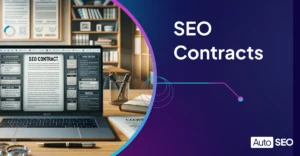ADA Lawsuits

Imagine navigating the vast ocean of the internet, only to find many of its treasures hidden behind barriers. That’s the unfortunate reality faced by millions of people with disabilities — a web that was not designed for them.
As a result, there has been a significant rise in the number of ADA lawsuits driven by specialized plaintiff firms in New York and California, targeting sectors like e-commerce, food services, and education, with e-commerce particularly vulnerable.
As the tide of ADA lawsuits rises, it’s time to embrace a sea change in web accessibility and discover the tools and techniques to protect your business from the threat of legal action and bring the web more fully alive for everyone.
Table of Contents
What is the Americans with Disabilities Act ADA?
The Americans with Disabilities Act (ADA) is a landmark civil rights law in the United States enacted in 1990. Its primary aim is to prohibit discrimination against individuals with disabilities in all areas of public life, including jobs, schools, transportation, and all public and private places open to the general public. The ADA is divided into several titles, each addressing different areas of public life:
Title I – Employment: This section prohibits discrimination against people with disabilities in employment. It applies to employers with 15 or more employees and covers job application procedures, hiring, firing, advancement, compensation, job training, and other terms, conditions, and privileges of employment.
Title II – Public Entities (and Public Transportation): This title applies to public entities, such as state and local government and their departments and agencies. It mandates that public transportation services, like buses and trains, are accessible to people with disabilities.
Title III – Public Accommodations and Services Operated by Private Entities: Under this title, facilities such as restaurants, hotels, theaters, convention centers, retail stores, and other businesses must be accessible to people with disabilities.
Title IV – Telecommunications: This title requires telephone and Internet companies to provide a nationwide system of relay services allowing individuals with hearing or speech disabilities to communicate over the telephone.
Title V – Miscellaneous Provisions: This section includes a variety of provisions relating to the ADA as a whole, including its relationship to other laws, state immunity, its impact on insurance providers and benefits, a prohibition against retaliation and coercion, illegal use of drugs, and attorney’s fees.
Overall, the ADA is a comprehensive legislation seeking to ensure that individuals with disabilities have the same rights and opportunities as everyone else, fostering a more inclusive society.
A Wave of Website Accessibility Lawsuits
However, the ADA, crucial for equal opportunities, confronts a significant challenge: many websites remain inaccessible. This gap in digital accessibility has led to a surge in lawsuits, particularly around website compliance.
In 2022 alone, 2,387 web accessibility lawsuits were filed in either federal court under the ADA or California State Court under the Unruh Act, marking a 1.5% increase from the previous year. New York and California were the top filing states, with New York filing 1,660 lawsuits and California 649.
To illustrate the kinds of lawsuits coming to prominence, take a look at the following precedent-setting cases:
Netflix: Sued in 2012 for failing to provide adequate closed captioning for deaf or hard-of-hearing users.
Winn-Dixie: In 2017, it was challenged for its website’s inaccessibility to visually impaired users, marking a significant precedent.
Nike and Converse: Faced legal action in 2017 due to websites being inaccessible to visually impaired users.
Amazon: Sued in 2018 over barriers to blind or visually impaired users.
Domino’s Pizza: Involved in a lawsuit in 2019 for ADA Title III violations. (Link)
These cases highlight a growing trend towards litigation, with e-commerce platforms particularly vulnerable. This increase in lawsuits underscores the urgency for businesses to understand their legal obligations and to adopt accessible web practices.
WebAIM’s 2022-2023 report reveals a concerning trend: 96.3% of websites don’t fully meet WCAG 2 standards, leading to low-contrast text and missing alt text. As a result, companies failing to achieve basic web accessibility compliance face increasing legal threats, underlining the necessity for urgent action in this domain.
Strides and Setbacks in Web Accessibility
In the 21st Century, Internet access is a cornerstone of all aspects of life, from social services to health information, news, entertainment, and commerce. Yet, many disabled individuals still face barriers to access because substantial portions of the web are inaccessible to them.
In addressing these challenges, it’s crucial to recognize the role of the Web Content Accessibility Guidelines (WCAG) developed by the Web Accessibility Initiative, part of the World Wide Web Consortium (W3C). Despite the efforts, WebAIM’s 2022-2023 report shows that 96.3% of websites failed to fully meet WCAG 2 standards, with common issues including low contrast text and missing alt text.
WebAim, a non-profit dedicated to web accessibility, conducts annual analyses of the top 1,000,000 home pages to see how well they align with these guidelines. Its 2022-2023 report reveals a dual narrative of progress and challenges.
Web Accessibility Insights from WebAIM’s 2023 Report:
ARIA Adoption: In 2023, 80% of websites implemented ARIA (Accessible Rich Internet Applications) for better accessibility, an increase from 74.6% in 2022. However, pages with ARIA present had 68.6% more detected errors.
Error Reduction: Websites averaged 50 accessibility errors each, slightly improving from the previous year.
Complex Websites: The complexity of websites grew, with a 10% increase in elements (like buttons, links, etc.) per homepage.
Compliance Issues: 96.3% of websites failed to fully meet WCAG 2 standards for making web content more accessible.
Common Accessibility Problems: The most frequent issues were low contrast text (hard to read for those with visual impairments), 22.1% of images missing descriptive text (alt text), and 35.8% of forms having unclear labels.
Source: WebAim.Org
Can Accessibility be Automated?
Despite the onset of AI and automated solutions for accessibility, the current reality is that such technologies cannot yet be fully automated.
Gus Alexiou detailed in a Forbes article that this misconception contributes to the increasing legal challenges businesses face. No sector is exempt, from small businesses with revenues under $25 million, which comprise 77% of defendants, to educational institutions, now the third most targeted sector.
These lawsuits underscore a crucial message: digital accessibility is not just a commendable goal but an essential requirement. Organizations must understand their legal obligations and the limitations of automated solutions while also recognizing the untapped market potential of the disabled community.
People with disabilities make up 15-25% of the U.S. population, offering significant economic opportunities for businesses that prioritize accessible online services. Of course, these figures can be extrapolated globally, signaling that the lost opportunities are not confined to the United States.
To better understand what kinds of accessibility issues disabled people deal with when accessing the web, it is useful to imagine a few hypothetical scenarios.
Sarah’s Struggle: A Tale of Invisible Text
Meet Sarah, a talented graphic designer with limited hand mobility. For her, a mouse is more like a pesky rodent than a helpful tool. She navigates websites using only her keyboard. But alas, many websites are like keyboard mazes with no exit. Ensuring websites are navigable via keyboard commands isn’t just a courtesy; it’s a lifeline for many users like Sarah.
Kevin’s Conundrum: The Keyboard Odyssey
Then there’s Kevin, a brilliant student with a visual impairment. She uses a screen reader to surf the web. However, on many sites, her digital compass goes haywire. Why? Because these websites lack alternative text (Alt Text) for images. For Sarah, it’s like sailing without a map. Vast swathes of what is visible to those without such issues are hidden from her.
Simple fixes like adding descriptive alt-text can make a huge difference, allowing her screen reader to narrate the unseen images. Here at AutoSEO, we have created an AI tool to help you do that.
Emily’s Echo: Lost in Translation
Let’s not forget Emily, a vivacious vlogger who is hard of hearing. Caption-less videos and podcasts are like silent movies for her – entertaining but often incomprehensible.
Adding captions and transcripts isn’t just about inclusivity; it’s about giving a voice to otherwise silent content for users like Emily.
Of course, it’s also a huge benefit for users wanting to consume your content in text format, ensuring the benefits are compounded by several multiples.
Government Initiatives: Lights in the Digital Sea
The US Approach – State and local governments
The US government’s commitment to digital accessibility is evident in its enforcement of the Americans with Disabilities Act (ADA). This commitment is not just a federal initiative but extends to state and local levels, ensuring a comprehensive approach to accessibility nationwide.
The active role of agencies like the Department of Justice (DOJ), which has been instrumental in ensuring that public and private entities comply with ADA standards, is key to this enforcement. This is especially pertinent in the digital realm, where accessibility is often overlooked.
The DOJ’s action against Rite Aid Corporation is a notable example of this enforcement. The issue at hand involved Rite Aid’s Vaccine Registration Portal. The DOJ identified that the portal was not fully accessible to people with disabilities, particularly those who could not use its service due to various barriers. In response, the DOJ required Rite Aid to implement significant modifications to enhance the portal’s accessibility. This action underscored the government’s commitment to ensuring that digital services, especially those critical to health and welfare, are accessible to all citizens, including those with disabilities.
The EU’s Voyage
Across the Atlantic, the European Union’s Web Accessibility Directive mandates public sector websites and apps to be accessible, reflecting a global shift towards digital inclusivity.
Broader Context: Why Lawsuits Are Just the Tip of the Iceberg
While ADA lawsuits are making waves, they’re part of a larger movement towards a universally accessible web. These legal actions are not just about compliance but about acknowledging the internet as a crucial lifeline for many, emphasizing the ethical imperative of digital accessibility.
So, let’s take some time to examine the most important steps you can take toward ensuring your content is accessible to your entire audience. Below are ten key strategies you can adopt to ensure your website is disability friendly.
10 Key Strategies for Disability-Friendly Web Accessibility
Alt Text for Images: Provide descriptive alt text for all images to aid screen reader users.
Keyboard Navigation: Ensure the entire site is navigable using only a keyboard.
Text Contrast and Size: Where possible, use high contrast colors and allow text size adjustment for visual clarity.
Captioning and Transcripts: Offer captions for videos and transcripts for audio content.
Consistent Layout: Maintain a consistent, predictable layout and navigation structure.
Avoiding Time-Limited Content: Provide sufficient time for all users to read and use the content.
ARIA Landmarks: Use ARIA landmarks to identify key areas of the page for screen readers.
Accessible Forms: Label forms clearly and provide error guidance.
Testing with Assistive Technologies: Regularly test your site with various assistive technologies.
Accessibility Training and Policy: Educate your team about accessibility and establish a clear policy.
HTML Semantic Elements: Building Blocks of Accessible Web
Understanding HTML semantic elements is another key component to creating an accessible design. These elements, like <header>, <nav>, <main>, and <footer>, provide structure and meaning to web content, making it more navigable and understandable, especially for assistive technologies.
It’s akin to arranging a book with a clear table of contents, chapters, and index – ensuring everyone can follow the story.
Toolkit for Accessible Design: Equipping Your Ship
Creating an accessible website might seem daunting, but various tools and resources make it a navigable journey:
Automated Checkers: Tools like WAVE or Google Lighthouse offer a bird’s-eye view of your site’s accessibility landscape, identifying potential issues.
Screen Readers: Investigating tools like JAWS and NVDA will help you understand how your site is experienced by users with visual impairments.
Color Contrast Analyzers: Ensuring your color palette is accessible is made easier with tools like the WebAIM Color Contrast Checker.
Responsive Design Checkers: These ensure your site is friendly to various devices and screen sizes.
Code Validators: Use validator tools to ensure your site’s code meets standard web protocols.
User Testing: Engage with diverse user groups, including those with disabilities, to gain insights into real-world accessibility challenges.
Conclusion: Sailing Towards an Inclusive Digital Horizon
As we navigate the changing currents of web accessibility, it’s clear that this journey is about avoiding legal storms and charting a course toward a web world where everyone can sail smoothly. By embracing accessibility practices, businesses comply with the law and open their digital doors to a wider, diverse audience.
FAQ: Navigating Common Queries
How prevalent are ADA lawsuits in the digital realm?
AQuite prevalent and growing. With increasing awareness and enforcement, businesses of all sizes see a notable rise in such lawsuits.
How does the EU’s approach to web accessibility compare to the US?
While both aim for inclusivity, the EU’s Web Accessibility Directive focuses more on public sector websites, whereas the ADA covers a broader spectrum, including private businesses.
What are some key elements of accessible web design?
Key elements include semantic HTML, keyboard navigability, high color contrast, alt texts for images, and responsive design.
Are there tools to help make a website accessible?
Yes, various tools are available, from automated checkers to screen readers and color contrast analyzers, aiding in creating a more accessible web experience.
Embarking on this voyage towards digital accessibility isn’t just a regulatory requirement; it’s a commitment to inclusivity and understanding. As we ride the waves of change, let’s ensure our digital world is a welcoming harbor for all.
Happy sailing!
Additional Useful Links:
Test your website for accessibility.
Web Accessibility for Designers – Cheat Sheet

Written by Peter Selmeczy
As the Head of Growth at AutoSEO I love everything about content, SEO, and AI. Hope you like my musings and would love to talk to you in the comments.



